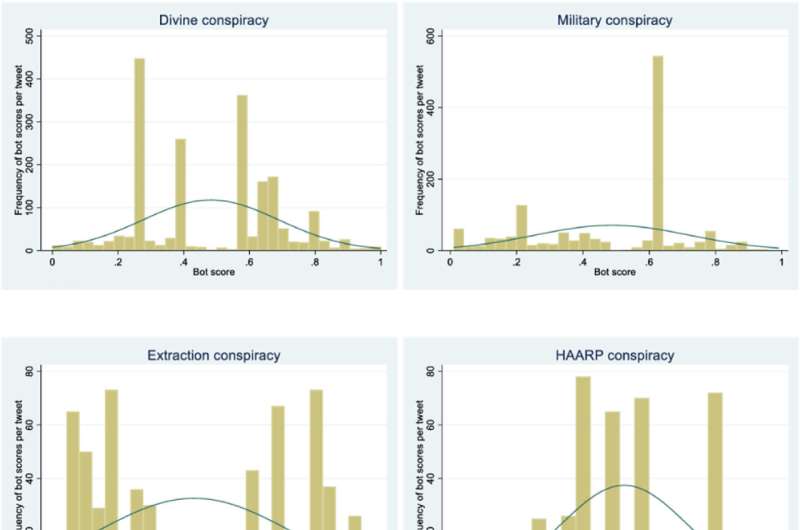This article has been reviewed according to Science X's editorial process and policies. Editors have highlighted the following attributes while ensuring the content's credibility:
fact-checked
trusted source
proofread
Rise of malicious bots: How automatons shake up Twitter with earthquake conspiracies

Numerous wild conspiracies gained momentum online following significant seismic events in the past. In light of the growing dominance of social media and the spread of misinformation, a new paper reveals how bots contribute to the dissemination of conspiracy theories surrounding earthquakes.
Earthquakes, resulting from the collision of tectonic plates, are widely recognized as natural occurrences, and extensive scientific knowledge exists in this field. One of the reasons why scientific facts about earthquakes are still connected with conspiracies, is because earthquakes represent a typical example of a dread risk: a sudden, uncertain event with large and devastating social and economic consequences.
As social media becomes more ingrained in our daily lives and spreads a vast amount of information, both true and false, the exploration of conspiracies and their impact is becoming an increasingly significant field of study. The IIASA Advancing Systems Analysis Program prides itself on innovation in models, methods, data, and engagement, and social media data presents significant opportunities to analyze behaviors and other social issues in a novel way.
In their study, the IIASA researchers adopted an innovative approach, utilizing data generated through social media platforms to gain insights into the intersection of artificial intelligence and human behavior. The authors identified the seven most widely spread conspiracy discourses about earthquakes and investigated the role of bots—software programs that perform automated tasks on the internet—in spreading these conspiracies.
"We found that bot-like accounts, despite being a minority compared to human-like accounts, were more active in spreading misinformation and conspiracies about earthquakes on Twitter. Furthermore, the link between the bot score and toxicity level highlights the potential negative impact of bot-like accounts in promoting disruptive behaviors," explains study author Nadejda Komendantova, Cooperation and Transformative Governance Research Group Leader and senior researcher in the IIASA Advancing Systems Analysis Program.
The authors analyzed tweets extracted in November 2022, following the 5.6-magnitute earthquake in Indonesia, which caused severe damage and killed more than 260 people. The results show that conspiracy discourses related to military activities and divine intervention dominated the discussions about earthquakes on Twitter. Tweets were also linked to the United States' High Frequency Active Auroral Research Program (HAARP)—a weather control program—being the origin of earthquakes. Other conspirative discourses centered around the European Organization for Nuclear Research (CERN) and aliens, implying that CERN research or extraterrestrial beings were causing earthquakes.
"In 2020, bots made up 40.8% of internet traffic, with almost two thirds being bots of malicious intent," highlights Dmitry Erokhin, study co-author and researcher in the IIASA Cooperation and Transformative Governance Research Group. "This paper demonstrates that bots play a significant role in spreading conspiracy theories about earthquakes on social media. By understanding the dynamics of information dissemination, policymakers and social media platforms can develop effective strategies to address the issue. Increased efforts are needed to combat the spread of conspiracies to prevent damage to public understanding of science and evidence-based decision making."
The paper is published in the International Journal of Disaster Risk Reduction.
More information: Dmitry Erokhin et al, The role of bots in spreading conspiracies: Case study of discourse about earthquakes on Twitter, International Journal of Disaster Risk Reduction (2023). DOI: 10.1016/j.ijdrr.2023.103740




















